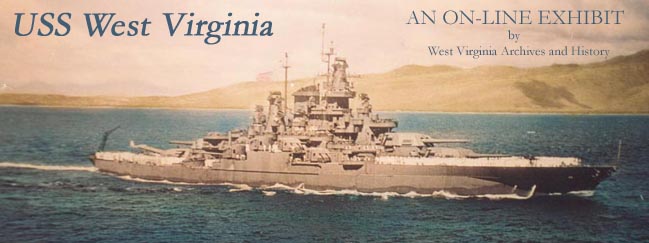

| Despite the extensive damage, some of those who examined the USS West Virginia after Pearl Harbor believed she could be repaired. These men, including Acting Captain Lt. Commander William White, believed it might be possible to raise the ship because it lay on an almost even keel. Planning for salvage operations began a week after the attack, but the West Virginia was low on the priority list due to the extensive damage it had suffered. |
| Efforts to raise the battleship began in early 1942. Huge cofferdams were built, weighted, and lowered by derricks to form a huge outer wall around the ship. Captain Homer N. Wallin, who headed the Salvage Division, utilized tremic cement to seal the cofferdams. The water and debris in the ship were then pumped out, while skimmers retrieved nearly 40,000 gallons of fuel oil. On May 17, 1942, the West Virginia floated and was towed to Drydock No. 1, where the cement was dynamited off the ship. |
| Salvage Report of Captain
William White
The USS West Virginia remained in Drydock No. 1 for nearly one year. The wooden cofferdams were replaced with steel, a gun turret and steering gear were repaired, a new rudder was constructed and installed and the electric drive machinery was restacked and rewound. On May 7, 1943, the battleship departed for Puget Sound Navy Yard in Bremerton, Washington. Here the West Virginia was modernized with new deck armor, a new ventilation system, increased armament, radar and many other features. |